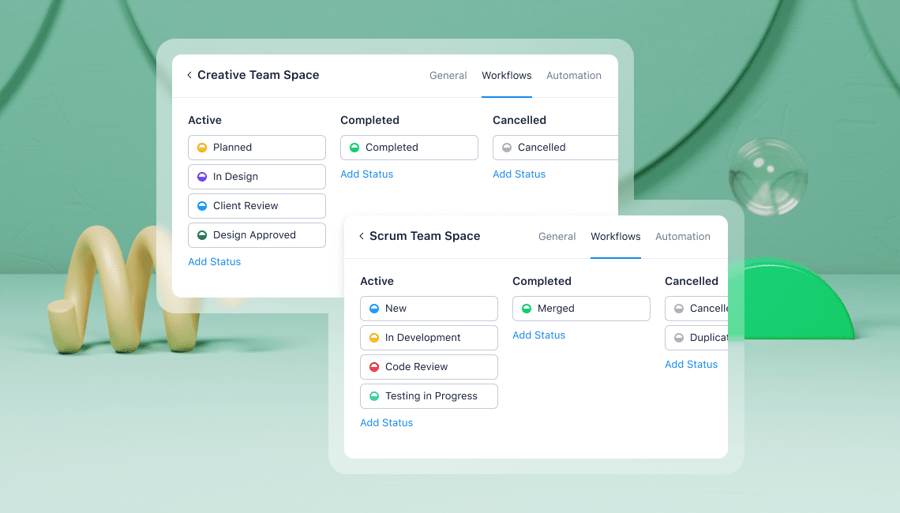Key takeaways:
- What are the five Scrum values? Commitment, focus, openness, respect, and courage are the five core values essential to Scrum success.
- How do Scrum values impact team performance? Upholding these values fosters teamwork and adaptability, crucial for reaching project goals efficiently.
- What’s the difference between Scrum values and principles? Values guide behavior, while principles are external rules ensuring proper Scrum application.
- How can Scrum masters promote these values? Through transparent communication, setting proper priorities, and modeling respectful behavior.
- What platform can support Scrum teams effectively? Wrike enhances Scrum processes with task prioritization, real-time collaboration, and streamlined sprint planning.
If you manage or lead a Scrum team, you know it’s one of the most effective project management frameworks in use today. Though popular, teams can only experience the full benefits of the Scrum methodology by understanding and implementing the five Scrum values.
Much like organizational or company values, Scrum values are values that Scrum team members uphold. These values are the foundation on which the Scrum framework is built. In order for projects to reach their full potential, every team member must commit to upholding these values in the Scrum team charter.
Keep reading to learn exactly what the five Scrum values are, why they’re so important, the difference between Scrum values and Scrum principles, and how you can promote these values within your team and begin reaping the full benefits of this powerful project management methodology.
What are the five Scrum values?
The five Scrum values are commitment, focus, openness, respect, and courage. According to the Scrum guide, “Successful use of Scrum depends on people becoming more proficient in living these five values.”
The Scrum framework was designed specifically for managing complex projects that must be able to adapt quickly to changes in scope or requirements (the scope definition in project management refers to the objectives and requirements that go into each project). That’s why each of these five Scrum values is so critical to the success of a Scrum project.
Let’s explore each one a little more closely.
Commitment
“People personally commit to achieving the goals of the Scrum team.” — The Scrum Guide
Think about an elite Special Forces military unit. These small, specialized teams are highly adaptable and must carry out complicated missions that can change in the blink of an eye. In order to successfully navigate these life and death situations, each team member must be 100% committed not only to the mission at hand but to their fellow team members, too.
While most projects are not matters of life and death, the general concept is the same for Scrum teams. Scrum teams must be able to work together as a unit to achieve a common goal. That means trusting one another to follow through on their tasks and deliver to the best of their abilities. This will only happen when each team member has fully committed to the team and the project.
Scrum masters and team leaders can help promote commitment by facilitating proper sprint planning and protecting teams from mid-sprint scope changes and unnecessary pressure from product owners.
Focus
“Everyone focuses on the work of the Sprint and the goals of the Scrum team.” — The Scrum Guide
One of the hallmarks of the Scrum methodology is the sprint, which is a specified period of time during which team members work to achieve a stated goal. In order to get the most out of each sprint, each team member must remain focused on the task at hand as well as how it impacts the sprint goal.
To help team members stay focused, Scrum masters can limit the number of tasks or priorities placed on each person during sprints. Additionally, encouraging full team participation at the daily Scrum meeting can help individuals stay focused on their specified tasks.
Openness
“The Scrum team and its stakeholders agree to be open about all the work and the challenges with performing the work.” — The Scrum Guide
In order for the Scrum team to make the most progress in the shortest time possible, each team member must be brutally honest and open about their own progress. The purpose of the daily Scrum meeting is to identify and solve problems. That can’t happen if team members aren’t forthcoming about issues or roadblocks they’re experiencing. Additionally, team members must be open to working with their colleagues and view them as valuable contributors to the success of the project.
One of the best ways for Scrum masters to promote openness is by being transparent with their teams. Delivering honest feedback during daily Scrum meetings is not only vital to making necessary adjustments but will also encourage honesty and openness in return from team members.
Respect
“Scrum team members respect each other to be capable, independent people.” — The Scrum Guide
Just as it does in any team endeavor, respect in a Scrum team means recognizing that no single individual or their contribution is more valuable than another. Respect also means trusting your fellow team members to fulfill their tasks, listening to and considering their ideas, and recognizing their accomplishments.
Scrum masters can help foster respect among their teams by demonstrating respect to the product owner, stakeholders, and their team members.
Courage
“The Scrum team members have courage to do the right thing and work on tough problems.” — The Scrum Guide
Finally, Scrum teams must have the courage to be honest, open, and transparent both with themselves and with stakeholders about the project’s progress and any roadblocks they’re experiencing. Team members also need the courage to ask for help when it’s needed, to try new tactics or methods they’re not used to, and to respectfully disagree and have an open dialogue.
Just like respect, Scrum masters can promote courage first and foremost by demonstrating it. The Scrum master must have the courage to stand up to stakeholders and product owners to prevent mid-sprint changes or scope creep.

Are Scrum values and principles the same?
The short answer is no, Scrum values and principles are not the same. The five Scrum values are internal qualities that guide team member behavior, while Scrum principles are more like external rules that help ensure the appropriate application of the Scrum methodology.
What are Scrum principles?
Though not officially mentioned in the Scrum guide, there are six Scrum principles. These principles of Scrum are:
- Empirical process control: Scrum teams must routinely review and adapt their workflows based on changing project needs and scope.
- Self-organization: Each Scrum team member must take ownership of their tasks and keep themselves accountable to the team and the project.
- Collaboration: Teams must interact and work together to deliver the greatest value.
- Value-based prioritization: Scrum masters and their teams must prioritize the backlog and organize sprints around the highest priority items.
- Time-boxing: Each sprint represents a finite amount of time during which certain tasks must be accomplished.
- Iterative development: The foundation of the Scrum methodology is adaptation and the ability to iterate quickly.
Take your Scrum team to the next level with Wrike
Wrike is a powerful project management platform that helps Scrum masters and teams get more from every sprint and deliver high-quality results.
Wrike’s online Scrum board allows your team to accelerate their iterations with task prioritization, real-time collaboration and updates, and automated reporting. Choose the visualization that works best for you on your Scrum board, whether that’s a table view or a Gantt chart, while easy-to-use time tracking can aid in more accurate sprint planning.
You can get started with Wrike and take your Scrum team to the next level today — simply click here to start now with a free trial.









